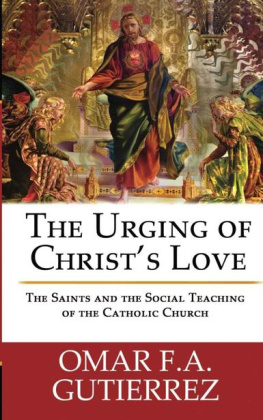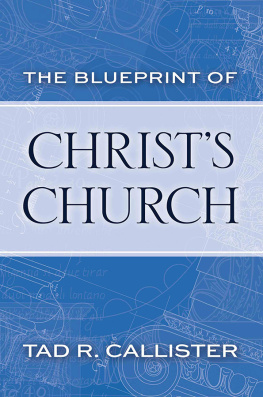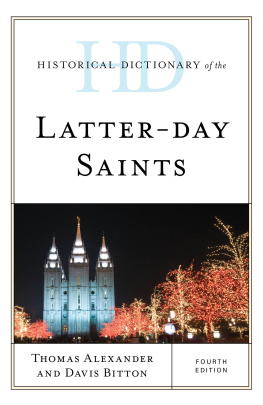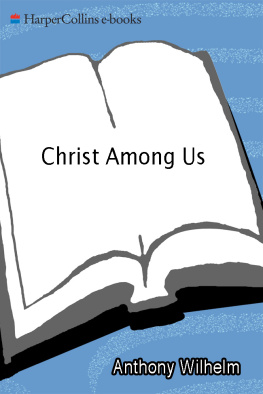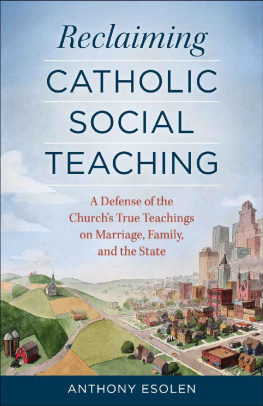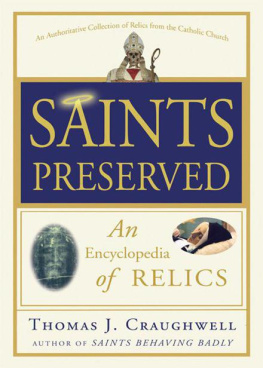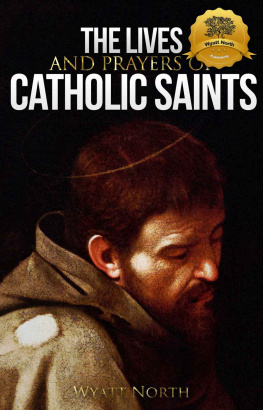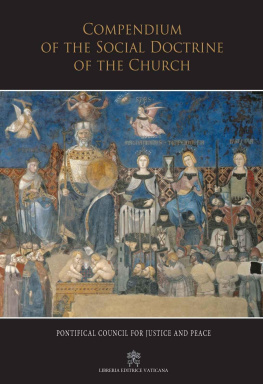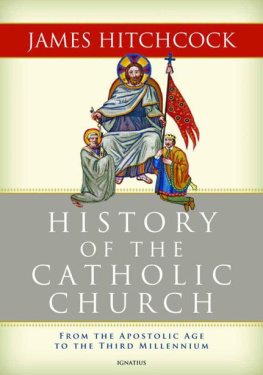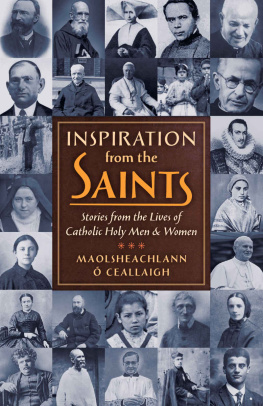THE URGING OF CHRISTS LOVE
The Saints and The Social Teaching
of the Catholic Church
OMAR F. A. GUTIRREZ
Discerning Hearts
Omaha, Nebraska
Nihil Obstat
Rev. Matthew J. Gutowski, S.T.L.
Censor Deputatus
Imprimatur
+ Archbishop George J. Lucas
Archbishop of Omaha
June 28, 2013
Discerning Hearts
Omaha, Nebraska
www.discerninghearts.com
2013 Omar F. A. Gutirrez
ISBN 978-0988627024
ISBN 0988627024
All Rights Reserved
No part of this book may be reproduced, stored on a retrieval system, or transmitted in any form, or by any means, electronic, mechanical, photocopying or otherwise, without the prior written permission of the publisher, except by a reviewer, who may quote brief passages in a review.
Compendium excerpts are from the English translation of the Compendium of the Social Doctrine of the Church, for use in the United States of America, copyright 2004, United States Conference of Catholic Bishops Libreria Editrice Vaticana. Used by permission. All rights reserved.
DEDICATION
To my wife Miriam, with whom I am blessed to live the social teaching every day.
This was the oath he swore
to our father Abraham:
to set us free from the hands of our enemies,
free to worship him without fear,
holy and righteous in his sight,
all the days of our life. Luke 1:73-75
CONTENTS
Acknowledgments | i |
Forward | ii |
Introduction | |
| From Suffering to Sacrifice, St. Germaine Cousin | |
| The Solitary Witness of Bl. Franz Jgersttter | |
| Liberation and St. Mary Magdalene | |
| The Uncompromising St. Thomas More | |
| The Selfless Heart of St. Jean Denaloue | |
| Grace and Mercy, St. Maria Goretti | |
| Sinner and Saint, St. Thomas Becket | |
| Communion and St. Isidore of Seville | |
| Salvation and Labor, St. Joseph the Workman | |
| Running Like St. John | |
| The Faith of Dorothy Day | |
End Notes | |
ACKNOWLEDGMENTS
I would like to acknowledge the patience and support of my family. I must especially thank Kris McGregor of Discerning Hearts. Kris has been a dear friend and a constant supporter. Without her, it can truly be said, this book would never have happened. I thank Deacon James Keating for his great generosity in writing a forward to this book. I am truly humbled by his kindness. I need to thank all the readers, and editors and commentators on the various drafts of this book: Rhonda Ortiz, Anna Dendinger and so many more. I must thank those prayer partners who helped to shepherd it along, especially those in the Pro Sanctity Movement. And I must thank my parents whose example provided me with so much of who and what I am. I cannot fail to thank the generosity of the Archdiocese of Omaha, and especially Archbishop George J. Lucas who has allowed me to work in the field of the social teaching of the Church.
I also need to thank the United States Confer ence of Catholic Bishops for the permission to reprint the portions of the Compendium of the Social Doctrine of the Catholic Church in the text below.
FORWARD
Here is the most unique book I have read in a long time. Through the lives of the saints we get a glimpse of what authentic spiritual integration is between holiness and doctrinal truth. Enfleshed in the saints, Omar Gutirrez has discovered the true habitat for Catholic Social Teaching. The saints which are meditated upon in this work clearly show how being gifted with holiness has public consequences. Because one is holy one is just. Holiness is the love of God received and the love of God given as gift to the culture. Holiness does not create an isolated person statically gazing upon the Trinity in mystical paralysis. Holiness, instead, is a suffering of the Trinitys presence unto total, personal, moral and spiritual transformation. And because the transformation is so complete the saint cannot help but give witness to the cause of his or her joy .
This witness penetrates the secular arena. Holiness possesses social ramifications, and since it does, those who feel threatened by such holiness continually wish to dismiss lines as irrelevant to modern life. The holy one will not be dismissed, however. He or she will publically burn with love for God, embarrassing and challenging all those who simply want to enclose Christ in a church building for one hour on Sunday. Faith will not be limited to the socially and politically acceptable confines marked out by government, popular culture or the intellectual class. Religion is not private; it is as public as a man hanging upon a cross.
Within the pages of this book the reader will discover that it is love for God that ignites justice and all the virtues. Love for God is an endless fountain from which the saints stand and drink. As they drink of the Spirit their minds awaken to this truth: Man and God are not one. There is a barrier between man and God because of sin. Noting this reality the saint is urged on by the Spirit of Christ to enter a life of prophetic action. In other words God says to the saint, Through my love and your suffering of my love unto the healing of your sins give witness to our relationship. Go to all those who still will not let Me reach them. Some saints take on the mission of Christ even at the cost of their own lives (martyrdom), but for all saints they take on His mission unto the death of their own egos.
In this way the saint is the only free man on the planet. He or she alone is bound so deeply to the mysteries of Christ they taste the freedom of no longer being torn by secular allegiances, tempted by idols, or tossed by the winds of cultural and po litical correctness. They embody the true man, men and women who have come to full stature, full maturity in Christ (Eph 4:13). It is the saint who is the only free person on the planet and therefore the only true adult. All the rest of us are still in high school wondering if the popular kids will ever notice us. Will I ever be seen by the powers of this passing world?
Meanwhile, the saints have quietly suffered a new identity, a second birth, a painful wrenching by the Spirit from all that undermines ones dignity and a joyful receiving of all that Divine consolation affords. In such a crucible it is ludicrous for the saint not to go public with his or her love; such endurance in the face of painful conversion was entered so that Christ could be KNOWN by others .
I am hoping that the many who read this book will begin to see what the Catholic Church has al ways taught: no one loves God or is loved by God as a private predilection. Gods love is as public as a marriage and as demanding as the very truth of lifes own meaning. The saints know this and live this because they fully know how superficial life is without God, while the life of publically witnessing to Gods merciful love is compelling by its substantive beauty. The saints represented in this book see the beauty and publicly live in its truth. Let them guide you to live there as well through the inspiring message of this book.
Deacon James Keating, Ph.D.
Institute for Priestly Formation
Creighton University, Omaha. NE
INTRODUCTION
Anyone who takes the time to dive into the lives of the saints quickly realizes that sanctity never comes easily and that the ranks of saints include more than levitating mystics who seemingly have no connection with reality. Those who study the lives of the saints also realize that sanctity is never just a single moment at the end of a sharp sword. It is a slow process marked by years of habit and effort.

